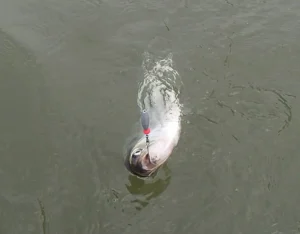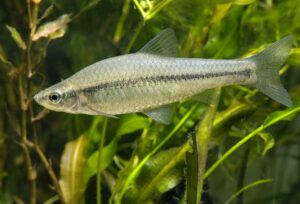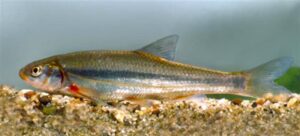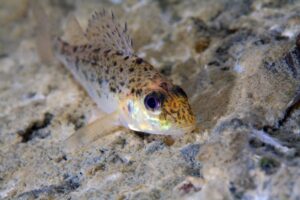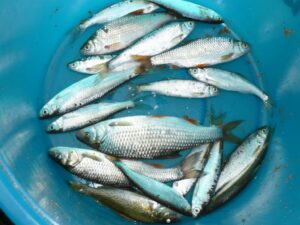Coarse fish: Smoothtail Ninespine Stickleback (Pungitius laevis)
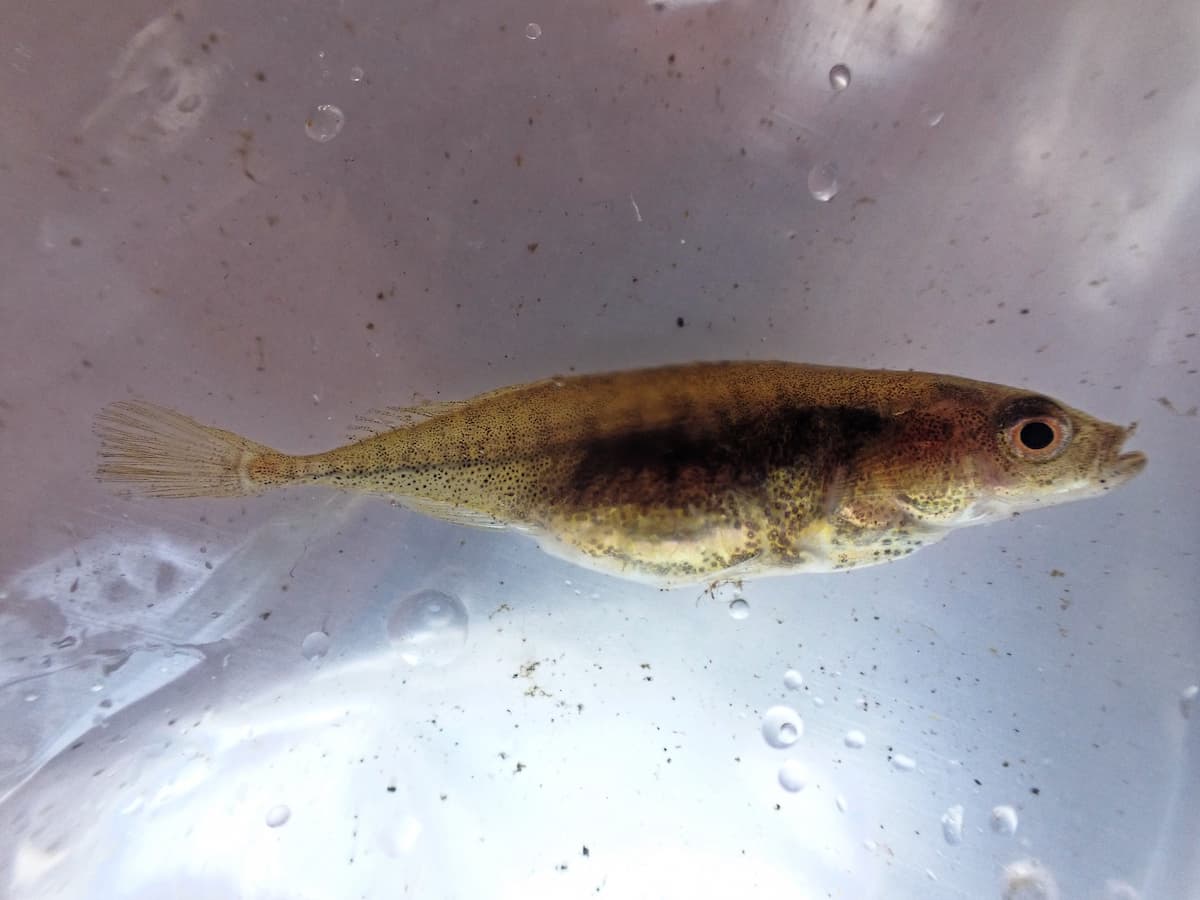
Smoothtail Ninespine Stickleback (Pungitius laevis) is a small species of freshwater fish belonging to the Gasterosteidae family.
It is a fairly common fish species in the freshwater and brackish waters of the northern hemisphere.
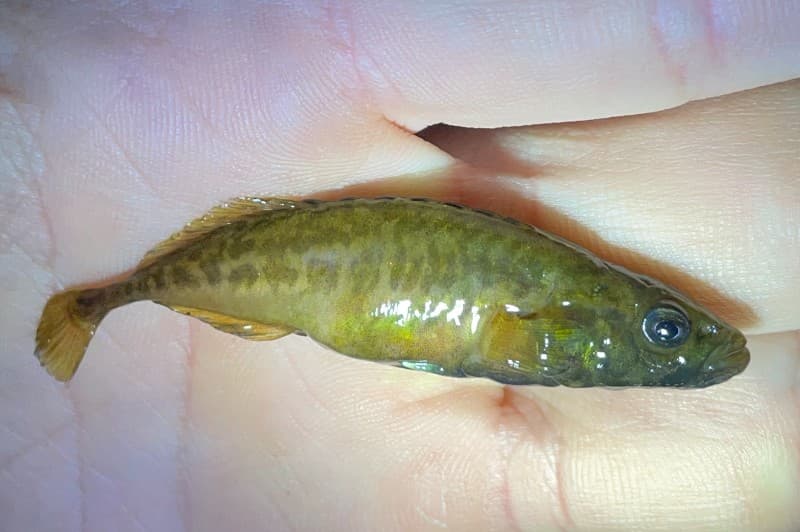
What is a Smoothtail Ninespine Stickleback (Pungitius laevis)?
The Smoothtail Ninespine Stickleback (Pungitius laevis) is a small species of freshwater fish belonging to the Gasterosteidae family. It is a fairly common fish species in freshwater and brackish waters of the northern hemisphere.
Physical Description of the Smoothtail Ninespine Stickleback
Distinctive physical appearance
The Smoothtail Ninespine Stickleback is characterised by its elongated and slender body.
The head of the Smoothtail Ninespine Stickleback (Pungitius laevis) is relatively small compared to its body. It has medium-sized, dark-coloured eyes. The jaws are well developed, with a subterminal and slightly oblique mouth.
The body shape of the Smoothtail Ninespine Stickleback is elongated and tapered, with a general coloration ranging from brown to olive green on the back and sides, and a silvery hue on the belly.
Its fins are transparent with a slight yellowish tint. The dorsal and anal fins are similar in size, while the pelvic and pectoral fins are short. The caudal fin is slightly forked and of medium size.
Average Size and Weight
On average, the Smoothtail Ninespine Stickleback measures about 5 to 7 centimetres (around 2 to 2.75 inches) in length. Its weight typically ranges between 2 and 5 grams.
Lifespan
This fish has an average lifespan of about 2 to 3 years in the wild.
Habitat, Distribution, and Feeding Habits Natural Habitat
The Smoothtail Ninespine Stickleback is generally associated with lentic environments rich in aquatic vegetation. It prefers calm waters such as ponds, marshes, and shallow areas of lakes.
Geographical Distribution
The Smoothtail Ninespine Stickleback is found in freshwater and brackish waters of the northern hemisphere, particularly in Europe, Asia, and North America.
Feeding Habits
This fish mainly feeds on small aquatic invertebrates such as insect larvae, crustaceans, and small worms. The Smoothtail Ninespine Stickleback (Pungitius laevis) also feeds on mosquito larvae, zooplankton, and small fish.
Reproduction
The reproductive process of the Smoothtail Ninespine Stickleback is similar to that of other fish species. Males build nests to attract females and then fertilise the eggs after mating. The males then monitor and protect the eggs until the fry hatch, which measures about 6 to 8 millimetres at birth. The males feed the fry for a short period before becoming independent. After hatching, young fish disperse into their environment and provide independently.
Interest in Fishing
Due to its small size, the Smoothtail Ninespine Stickleback (Pungitius laevis) is generally a minor target for sport or commercial fishing. However, some recreational anglers enjoy catching this fish for its playful nature, and it can be occasionally seen during angling in areas where it is abundant.
Fishing Techniques
Angling with small hooks and natural baits such as worms or insects is the most common method to catch the Smoothtail Ninespine Stickleback (Pungitius laevis). Additionally, fly fishing can also be effective for detecting the Smoothtail Ninespine Stickleback, using dry flies or nymphs as bait.
Finally, I would like to point out that fishing for the Smoothtail Ninespine Stickleback is subject to specific regulations in some regions, so it is necessary to ask about local restrictions before engaging in this activity.
It is important to practice responsible fishing for the Smoothtail Ninespine Stickleback, adhering to local regulations and preserving fish populations’ balance. Due to its small size and relatively short lifespan, overfishing the Smoothtail Ninespine Stickleback can negatively impact its abundance in aquatic ecosystems. Therefore, ethical and sustainable fishing is recommended, releasing captured specimens and limiting the amount taken for consumption.
Common Names for the Smoothtail Ninespine Stickleback (Pungitius laevis)
International common names given to the Smoothtail Ninespine Stickleback include the “Epinoche à queue lisse” in French, “Glattroter Stichling” in German, and “espinoso liso” in Spanish. These names are used to refer to this species in different regions of the world where it is present. It is important to note that the conservation of the Smoothtail Ninespine Stickleback is an important issue for the preservation of aquatic biodiversity, and protective measures are implemented in many countries to ensure its survival. Due to its role in aquatic ecosystems, it is essential to promote awareness of the importance of preserving this species and its natural habitat.
Conservation Status on the IUCN Red List
The Smoothtail Ninespine Stickleback (Pungitius laevis) is a relatively tolerant and adaptable species to different habitats. However, it is often one of the last species to disappear in habitats undergoing land conversion. Currently, it is assessed as “LC” (Least Concern) on the IUCN Red List, but it is likely to be affected by habitat degradation and water pollution.
As a predator of small aquatic invertebrates, the Smoothtail Ninespine Stickleback is essential in maintaining the balance of freshwater ecosystems. Its presence helps regulate prey populations and prevents the excessive proliferation of certain species of invertebrates, which positively impacts the biological diversity of aquatic environments where it occurs.


